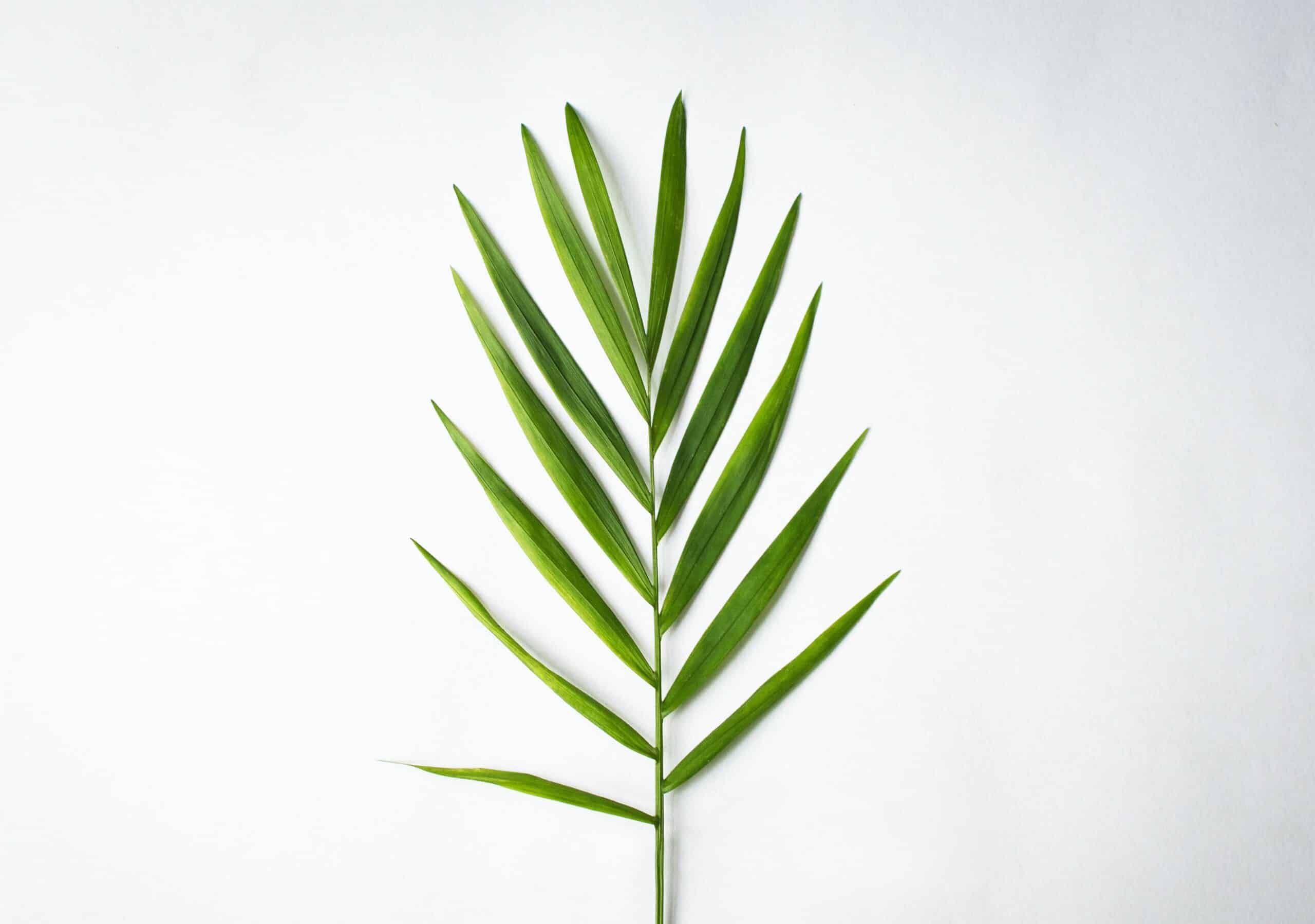The parlor palm (Chamaedorea elegans) is a tiny powerhouse of houseplant energy, bringing life to any room with its lush foliage and delicate leaves. Like an oasis in the desert for a weary traveler, these plants can help bring tranquility and beauty to your home. Just as it has done for centuries, the parlor palm will offer you an escape from the stresses of everyday life while also allowing you to create a vibrant indoor garden of your own. This plant care and growing guide will provide all the information you need to give your parlor palm a long and healthy life.
Parlor palms are one of the most common houseplants found in homes across the world, known for their ability to bring greenery into even the smallest spaces. These plants are very easy to grow and maintain, making them perfect for those just starting out with houseplants or anyone who wants an easy-care addition to their home decor. With proper care and attention, they can thrive indoors in almost any environment.
Whether you’re looking for a new way to dress up your living space or would like some assistance in caring for your existing potted plants, this guide is here to help you understand how best to care for your parlor palm so that it will flourish inside your home. Read on to learn more about how this beautiful plant can add life and joy into your home!
Overview Of Parlor Palm
Parlor palm (Chamaedorea elegans) is an evergreen perennial from the palm family. It’s native to Central America, and is one of the most popular houseplants around. With its air-purifying nature, low maintenance needs, and resilience to all sorts of conditions, it’s no wonder why this plant has been a household staple for many years.
The care requirements for parlor palm are minimal; it grows best in bright indirect light or in a shady spot but can tolerate darker areas too. It’s also fairly drought tolerant, so occasional waterings should be enough to keep it happy. Additionally, high humidity levels won’t hurt either: misting regularly or placing the plant near a humidifier will help it thrive. Because parlor palms grow very slowly, fertilizer isn’t necessary – just make sure the soil drains well.
When kept in optimal conditions, parlor palms can last for many years – perfect if you’re looking for a long-term houseplant companion! With proper care, this attractive foliage will easily become the star of any indoor environment.
Types Of Parlor Palms
When it comes to types of parlor palms, there are several varieties available. The Chamaedorea elegans – also known as the Neanthe Bella Palm or Parlor Palm – is one of the most popular choices for indoor plants. This type of palm is usually smaller and more compact than other varieties, making it ideal for growing indoors in tight spaces. It has a single slender trunk and long graceful leaves that reach up to two feet in height.
Other popular varieties include Chamaedorea seifrizii, or Bamboo Palm, and Chamaedorea radicalis, or Radicalis Palm. These types are slightly larger than the Parlor Palm and have multiple trunks instead of a single trunk. Their leaves tend to be wider and more feathery than those of the Parlor Palm, giving them a unique look that can add interest to any room or garden.
No matter what type you choose, all parlor palms need plenty of bright indirect light and regular watering for optimal growth. With proper care, these attractive plants will bring years of enjoyment into your home or office environment.
Finding the right parlor palm for your needs is easy when you know what’s available.
Where To Find Parlor Palms
“Necessity is the mother of invention”, and when it comes to finding a Parlor Palm for your home, you may need to get creative. While these plants are not as widely available as some other varieties, there are still a few reliable sources for avid plant parents.
For starters, local nurseries and garden centers can be great places to purchase a Parlor Palm. Try calling ahead to see if they carry it or have access to order one in. You may also find them in online plant shops or even classifieds websites like Craigslist.
Another option is trading with friends or joining local plant-swap groups. The green-thumb community is full of generous people who love sharing their plants with others. Connecting with these folks can be a great way to build your collection without going over budget.
Moving on, let’s dive into how to properly plant your new Parlor Palm so that it can thrive in its new home.
How To Plant Parlor Palms
Planting parlor palms is a great way to bring a touch of nature into your home. Did you know that these plants have been around for over 100 years? They’re an iconic houseplant, and they’ll look great in any room.
When it comes to planting parlor palms, the process is quite simple. All you need is a pot with drainage holes, good-quality potting mix, and a healthy plant. Start by filling the bottom of the pot with rocks or broken crockery for drainage before adding the soil. Then place your parlor palm in the center of the pot, fill in the gaps with soil, and press it down firmly to ensure that it’s stable. Water well and wait for new growth!
Taking care of your parlor palm doesn’t take too much effort either. With adequate sunlight, frequent watering, and some occasional fertilizing, these plants will stay looking their best for years to come! Now let’s look at what’s needed to keep your parlor palm healthy and happy.
How To Care For Parlor Palms
After planting parlor palms in the proper soil, it’s time to turn our attention to caring for them. Proper care is essential for a healthy, thriving plant.
The first step in caring for parlor palms is watering. These plants should be kept moist but not wet. Overwatering can cause root rot or other issues. When watering your palm, make sure the soil has been allowed to dry out somewhat before adding more water. In addition to regular watering, misting the leaves with a spray bottle can help keep them looking lush and vibrant.
Fertilizing is also important for parlor palms. Use a balanced fertilizer every two to three months during the growing season and always follow package instructions when using any fertilizer product. Regular pruning of dead or damaged leaves helps keep the plant looking its best and encourages new growth.
Finally, these plants need regular cleaning to remove dust and debris from their leaves that may inhibit photosynthesis and reduce air quality indoors. A soft cloth or brush will do nicely for this purpose; just be careful not to damage any of the foliage as you clean it off. With proper care, parlor palms will provide you with years of enjoyment! Transitioning into light requirements for parlor palms, let’s discuss what kind of light these plants need…
Light Requirements For Parlor Palms
Caring for parlor palms requires correct lighting conditions to ensure they thrive. Light is essential for the healthy growth of these plants and understanding light requirements can help you provide the best care possible. Let’s explore what it takes to keep your parlor palm thriving in its light needs.
Luxuriant lighting is a key factor in providing your parlor palm with the ideal environment. Placing them near a south or west-facing window helps them receive optimal sunlight throughout the day. Bright, indirect light is best for these plants, but be careful not to expose them to direct sun which can scorch their leaves.
If you don’t have access to natural light, you may need to invest in artificial lighting such as fluorescent lamps or LED lights that mimic natural daylight. This will help ensure they get enough illumination while preventing too much light exposure which can cause damage or discoloration of their leaves. With proper lighting, your parlor palm will flourish!
Water Needs For Parlor Palms
Watering your parlor palm is essential for its health and vitality. The plant does not tolerate drought well and needs to be kept consistently moist, so it’s important to check the soil moisture regularly. When the top inch of soil feels dry, it’s time to water. It’s best to use filtered or distilled water when possible and allow the excess water to drain away from the pot.
To keep your parlor palm healthy, you should also mist it occasionally with room-temperature water. This helps raise the humidity around the plant, which can be especially beneficial in areas with low humidity or during winter months when heaters are running. Be sure not to overdo it though; too much misting can lead to overwatering, so keep an eye on how often you’re doing it.
Keeping up with regular watering is key for keeping your parlor palm looking its best. With proper care and a few simple steps, you’ll be rewarded with a beautiful and healthy indoor houseplant that will add beauty and life to any home or office space. Now let’s look at what temperature requirements are needed for these attractive palms to thrive.
Temperature Requirements For Parlor Palms
Parlor palms can bring a lush, tropical feel to any room. Surprisingly, they are quite resilient when it comes to temperature requirements. In fact, the ideal temperatures for parlor palms range between 65-75°F during the day and 55-60°F at night.
These plants can tolerate higher and lower temperatures if conditions aren’t too extreme. If temperatures exceed 80°F, be sure to provide extra humidity or move your plant away from direct sunlight and heat sources. Additionally, in winter when outdoor temperatures dip below 50°F, you should make sure the indoor environment is kept warm so that your parlor palm won’t suffer from cold shock.
To keep your parlor palm healthy and thriving, ensure that it’s getting adequate warmth and humidity so that it can grow properly and maintain its vibrant green coloration. With proper care, your parlor palm will become an elegant addition to any living space. Now let’s look at how soil plays a role in caring for this tropical beauty.
Soil Requirements For Parlor Palms
When it comes to growing parlor palms, soil is an important factor. They need a well-draining potting mix that can hold moisture but also allow excess water to escape. A good mix for this type of plant is one that’s equal parts peat moss, perlite, and compost. It’s also important to remember to check the pH level of the soil once in a while.
When planting parlor palms, make sure not to over-pot them. When choosing a pot, opt for one that’s slightly bigger than the root ball because this will help with drainage. Additionally, you should use a pot with holes at the bottom so that any excess water can escape.
It’s also important to replace your potting soil every year or two since it will become compacted over time and won’t be able to properly drain anymore. Taking these steps will ensure your parlor palm has all the necessary nutrients it needs and enough room for its roots to grow properly. Now let’s look into fertilizing requirements for parlor palms.
Fertilizing Requirements For Parlor Palms
Ah, fertilizing requirements for parlor palms. What a great way to get your plants looking their best! After all, if you don’t give them the nutrients they need, the results can be quite devastating – leaves falling off and yellowing everywhere. But fear not! Fertilizing your parlor palm is easier than you might think. Let’s dive in and find out what it takes to keep this plant happy and healthy.
It’s important to fertilize your parlor palm on a regular basis – once every two or three months should do just fine. A balanced fertilizer with equal amounts of nitrogen, phosphorus and potassium is best; that way, you’ll ensure that your plant gets everything it needs without causing any harm. When applying fertilizer, be sure not to overdo it – too much can actually burn the roots of your plant and cause serious damage. Just a light dusting should do the trick!
Finally, make sure to use a liquid fertilizer rather than granular or pellet forms; these latter types tend to release their nutrients too quickly and can cause more harm than good in the long run. With a little bit of care and attention, your parlor palm should be thriving in no time! Now let’s move on to discuss pruning requirements for this beloved houseplant….
Pruning Requirements For Parlor Palms
Pruning parlor palms is like giving them a trim – it’s an important part of their care. Picture the fronds of a palm, reaching up into the air like an elegant dancer, and then imagine carefully snipping away to create a neat shape. That’s what pruning parlor palms is all about.
Parlor palms need to be pruned regularly. This helps to keep their growth in check and maintain a desirable size. You can also remove any dead fronds or yellowed leaves that have become unattractive or are blocking other parts of the plant from getting enough light or air circulation. When pruning, always use sharp scissors or shears and make sure you leave at least one inch of stem on each leaf so that it doesn’t damage the plant’s health.
It’s important to note that too much pruning can actually be detrimental to your parlor palm – it can cause stunted growth and poor overall health. It’s best to take a conservative approach and only remove what needs to be taken away for the sake of appearance or improved air flow. With regular, careful pruning, your parlor palm will look its best!
Common Issues With Parlor Palms
Though parlor palms are generally easy to care for, they can still experience a few common issues. To illustrate, let’s take a closer look.
Analogously, just like any other plant, parlor palms can struggle with pests and diseases such as scale insects and root rot. The former is characterized by small bumps on the leaves while the latter results in wilting leaves due to waterlogged soil. Additionally, problems may arise when the palm is exposed to too much sun or not enough light which can lead to dry tips or yellowing foliage respectively.
To prevent these issues, it is important to keep the soil moist but not soggy and ensure that your palm receives a balance of light and shade throughout the day. Regularly cleaning away dead leaves and debris from its surroundings will also help promote healthy growth in your parlor palm. With proper care, you’ll be able to enjoy your plant for many years to come!
Given all this information about common issues with parlor palms, it’s time to move on to propagating them.
Propagating Parlor Palms
The parlor palm is a symbol of tranquility and serenity, with its delicate fronds swaying gently in a refreshing breeze. Propagating this species of palm can help bring these calming properties into your home, not to mention the joy that comes from growing something yourself!
However, propagating a parlor palm requires some skill and effort. Firstly, you should identify the suitable parts of the existing plant that can be used for propagation. This usually involves removing parts of the stem or leaves to create cuttings. It’s important to use sterile tools when doing this, so as not to introduce any disease or fungus into the cutting.
Next, you must make sure that your cutting has enough moisture and nutrients for it to root successfully. A good medium for rooting is a mix of peat moss and perlite, which should be kept evenly moist throughout the process. Afterward, you’ll need to provide plenty of light and warmth for your new cutting in order for it to grow strong and healthy.
By following these steps correctly, you can have your own beautiful parlor palm thriving in no time! With patience and care, you’ll soon witness this little symbol of peace flourishing right before your eyes.
Choosing The Right Parlor Palm
Like a diamond in the rough, finding the perfect parlor palm for your home can be a daunting task. With so many varieties available, it’s important to know what to look for and how to identify the ideal plant. This article will help guide you through choosing the right parlor palm for your home.
When shopping for parlor palms, keep an eye out for healthy specimens that are free from disease or pest damage. Look at the overall shape of the leaves and make sure they are not wilting or yellowing – this is a sign of poor health. If possible, inspect the root system to ensure it is white and healthy looking. You should also consider how much light or shade your particular variety needs and make sure you have the right environment to support it.
Finally, research any special care requirements specific to each variety, such as temperature and humidity levels needed for optimal growth. These factors can help you narrow down which plants will work best and ensure you get one that will thrive in your particular environment. With a little bit of research and knowledge, you’ll be able to pick out the perfect parlor palm for your home! Transitioning into tips on growing these beautiful plants, next we’ll explore what’s needed to keep them thriving indoors.
Tips For Growing Parlor Palms
Parlor palms are a great way to bring a tropical feel into your home. According to the University of Minnesota, parlor palms are among the top ten most popular houseplants in the United States. With some care and attention, they can thrive indoors for many years! Here are some tips for growing parlor palms.
To get started, make sure you choose a spot with plenty of bright indirect light, such as a north-facing window or an east-facing window.Water your palm on a regular basis and make sure it has good drainage. Parlor palms prefer soil that is evenly moist – not overly wet or dry – so be sure to check frequently for signs of dryness and adjust accordingly.
Fertilizing once every two weeks during spring and summer will help keep your parlor palm healthy and happy. Look for fertilizers specially formulated for indoor plants, being careful not to overdo it as too much fertilizer can harm the plant’s delicate root system. Additionally, remove any yellowing leaves as soon as you spot them to prevent diseases from spreading in the plant’s foliage.
With these tips in mind, parlor palms can easily become a statement piece in your home while adding beauty and a touch of nature!
Frequently Asked Questions
How Often Should I Water My Parlor Palm?
Caring for your Parlor Palm is essential to keeping it healthy. But how often should you water it? Knowing when and how much to water your plant will help keep it looking its best.
To ensure that your Parlor Palm stays healthy, you’ll want to water it regularly. This usually means every week or two, though the exact frequency depends on several factors. It’s important to consider the temperature of the air and soil, how much light the plant is receiving, and the size of your pot when determining how often to water. Additionally, you may need to adjust watering frequency during different seasons.
In general, if you’re able to stick with a consistent schedule, you can’t go wrong. Make sure that the soil gets dry in between waterings and check for signs of overwatering such as yellowing leaves or root rot. Applying these simple tips will help keep your Parlor Palm thriving!
Can I Move My Parlor Palm Outdoors In The Summer?
The bright green leaves of the parlor palm, with its delicate fronds and elegant trunk, beckon to us from our living room windows. The thought of moving it outdoors into the natural sunlight may be tempting, but is it really a good idea? Can we bring our beloved parlor palm out into the summer sun?
The answer is yes – but with caution. Parlor palms are tropical plants, so they thrive in warm areas such as greenhouses. But too much direct sunlight can cause their leaves to scorch or burn. It’s best to move the plant slowly and gradually into a more exposed area so that it can acclimate without suffering any damage.
If you decide to take your parlor palm outside for the summer months, keep an eye on it and make sure it doesn’t overheat or become dehydrated under the hot sun. A shady spot where it will still get some sunlight is ideal, as well as providing plenty of water to keep its soil moist. With proper care and attention, your parlor palm could enjoy an outdoor stay during warmer weather!
How Do I Know If My Parlor Palm Is Getting Enough Light?
When it comes to caring for your parlor palm, one of the most important things to consider is whether or not the plant is getting enough light. Plants need sunlight in order to photosynthesize and grow, so it’s important to make sure that your parlor palm is getting enough light. But how can you tell?
One way to find out if your parlor palm is getting enough light is to look at its leaves. If the leaves are dark green and glossy, then it’s likely that your plant is getting enough light. On the other hand, if the leaves are faded or yellowing, this could be a sign that your parlor palm isn’t receiving enough light. Another indicator of insufficient lighting is if the leaves are growing slowly or falling off prematurely.
Lastly, you should also check how often you’re watering your plant. If you’re overwatering it, this can cause the leaves to become yellow or brown as well. So make sure that you’re following a regular watering schedule for your parlor palm and that there’s good drainage in the pot so that water doesn’t sit on top of the soil for too long. With these tips in mind, you’ll be able to ensure that your parlor palm receives enough light and stays healthy!
How Do I Know If I Am Over-Fertilizing My Parlor Palm?
Over-fertilizing your parlor palm isn’t something you want to do, but it’s easy to do without realizing it. According to the University of Florida IFAS Extension, over-fertilizing is one of the most common mistakes that indoor gardeners make. This can cause serious damage to your beloved plant. So, how can you tell if you’re over-fertilizing your parlor palm?
First and foremost, look for signs of nutrient burn. These include yellowing leaves, brown leaf tips and edges, and curling or wilting leaves. If your parlor palm is growing slowly or slowly dying off despite taking care of it regularly, this may also be an indication of over-fertilization. It’s important to note that even if these symptoms don’t appear immediately after fertilizing your plant, they can still be caused by too much fertilizer from past applications.
To prevent over-fertilizing your parlor palm in the first place, follow directions on the fertilizer package closely – dilute it at least half as much as recommended and only apply when necessary. Additionally, test soil pH levels before fertilizing so that you know exactly what nutrients your plant needs and in what amounts. Finally, make sure not to apply any fertilizer if the soil is dry because this can lead to burning roots and foliage quickly!
Are There Any Pests I Need To Watch Out For When Caring For My Parlor Palm?
Caring for a parlor palm is a rewarding experience, but pests can quickly ruin your hard work. Ever wondered what kind of critters you need to watch out for when looking after your parlor palm? You’re in luck – we’ve got all the answers!
Picture yourself as a spider, spinning a web of protection around your precious parlor palm. That’s exactly what you should do when it comes to guarding your beloved plant against pesky pests. Common culprits include scale insects, mealybugs, and aphids; these little critters feed on the sap of the plant, so if there are signs of yellowing or wilting leaves, it’s time to check for any invaders.
Fortunately, there are plenty of ways to keep pests at bay. Pruning away any damaged or dead foliage can help reduce their numbers, while regular applications of neem oil or insecticidal soap can also be effective in controlling infestations. Finally, introducing beneficial bugs such as ladybugs and lacewings will help ensure that your parlor palm stays healthy and pest-free for years to come.
Conclusion
Parlor palms are a great addition to any home, as they can easily add vibrancy and life to any space. With the right care, these plants can thrive indoors for years. Of course, there are a few important things to keep in mind when caring for parlor palms. Watering, light, and fertilizing all play an important role in keeping your plant healthy. Additionally, it’s important to watch out for pests that could potentially damage your plant.
Overall, taking proper care of your parlor palm is essential for its health and wellbeing. On average, parlor palms will typically last up to 10 years with the correct amount of TLC! For those looking for a beautiful houseplant with minimal maintenance requirements, the parlor palm is an excellent option. With some basic watering and light requirements met, you can ensure that your parlor palm will remain healthy and vibrant for many years to come.















![how to grow and care Parlor Palm [Chamaedorea Elegans] 27 dnghf74yw4s how to grow and care Parlor Palm [Chamaedorea Elegans] 26](https://green-life.blog/wp-content/uploads/2023/04/dnghf74yw4s-150x150.jpg)













